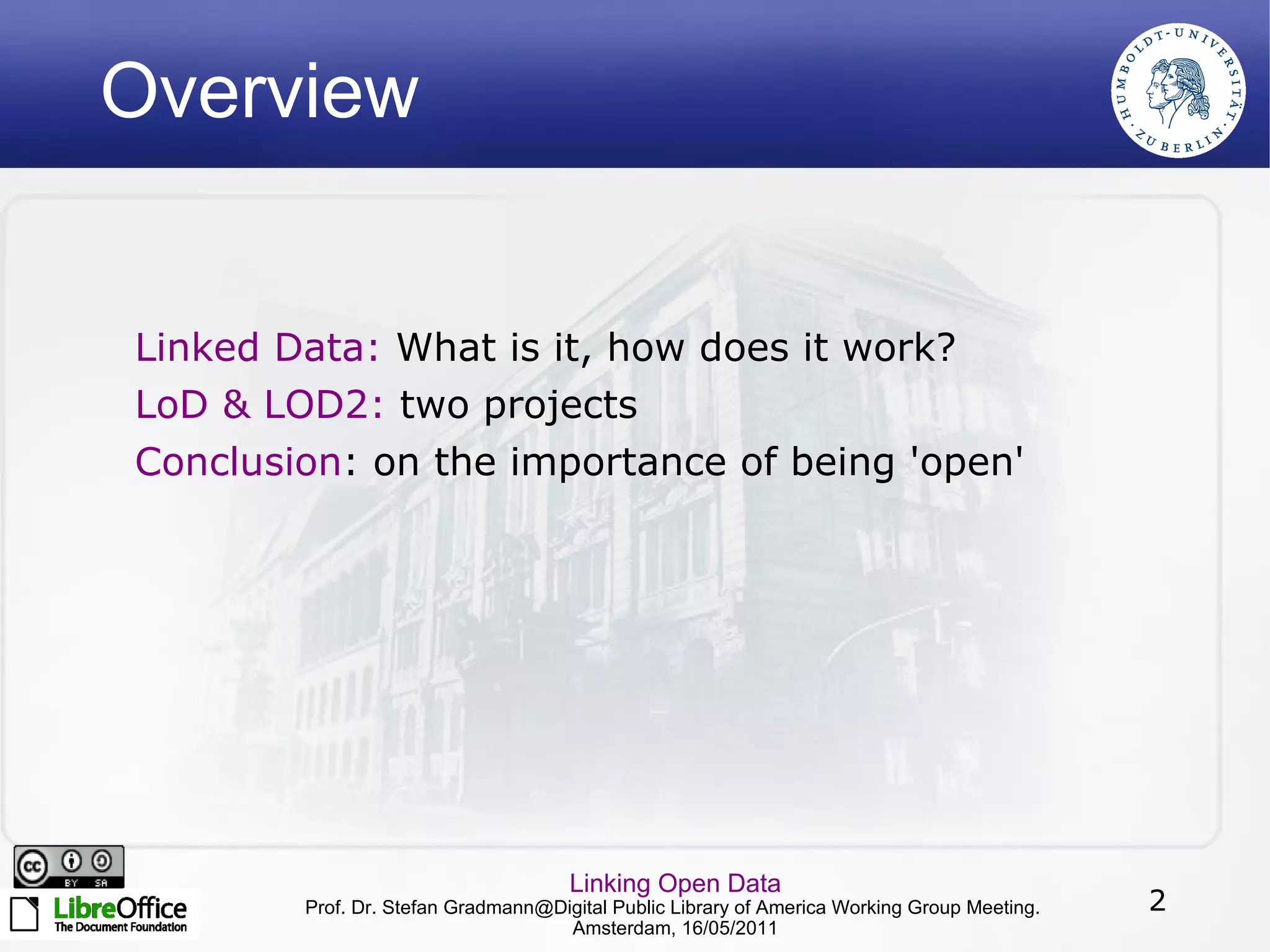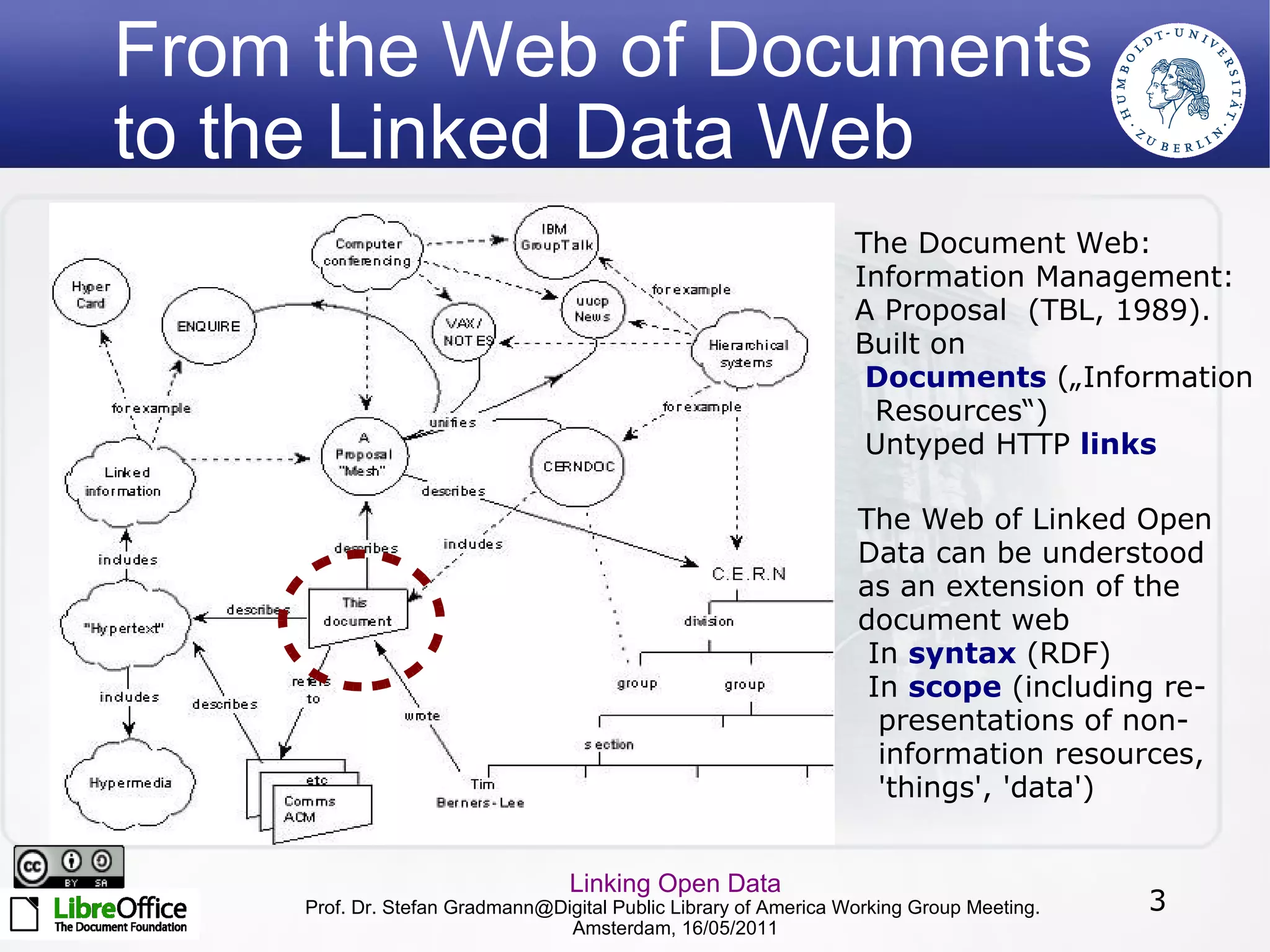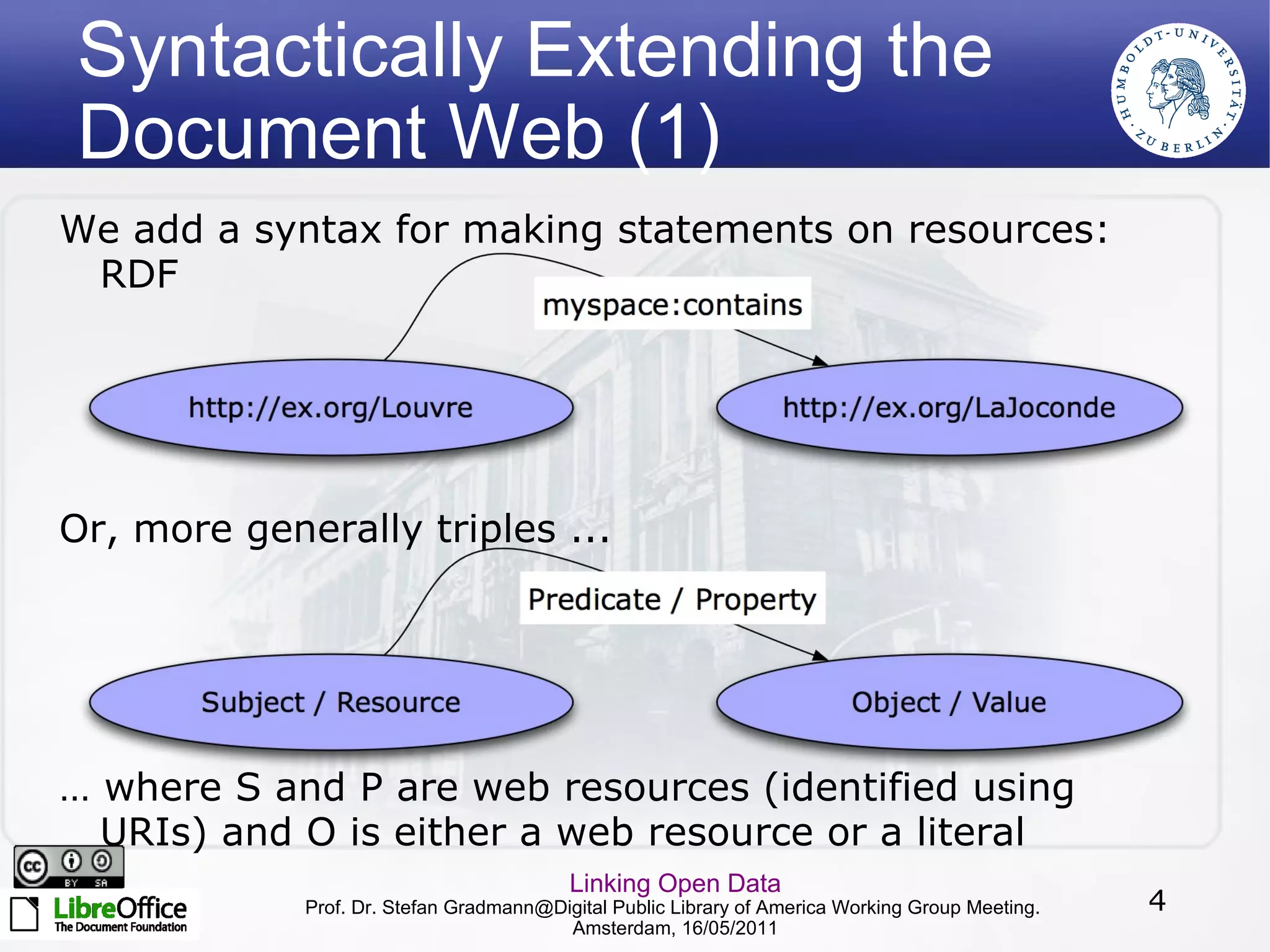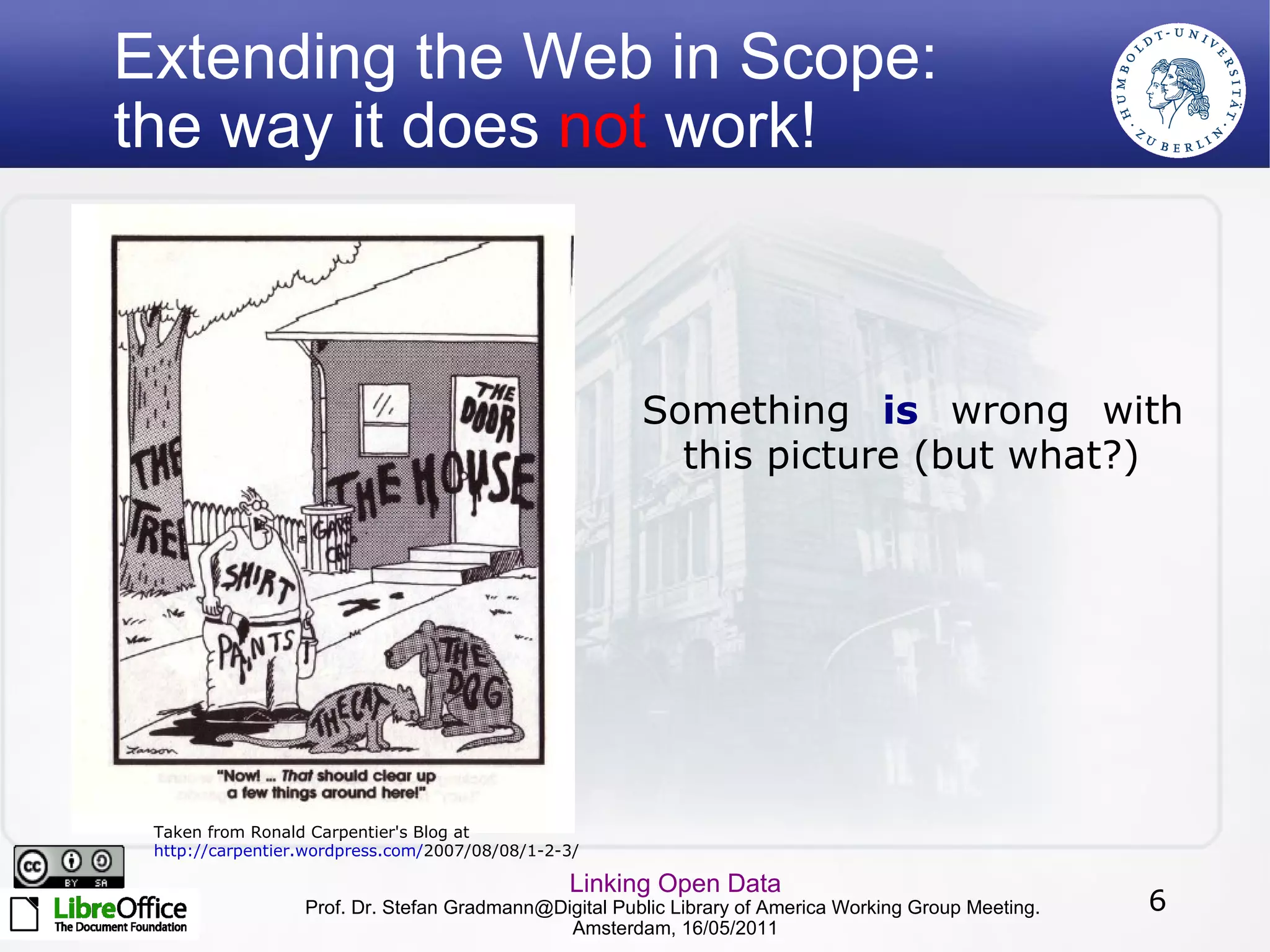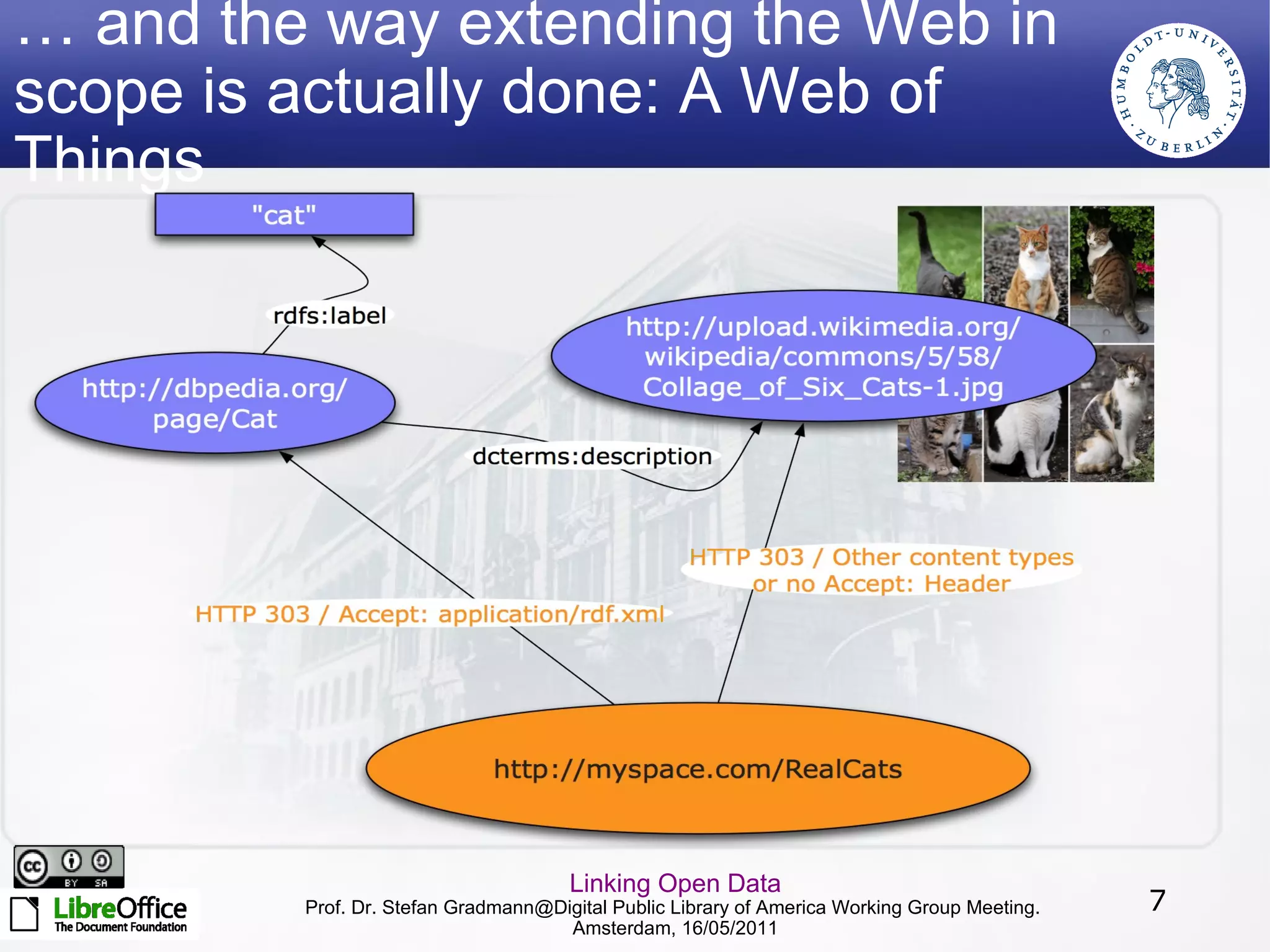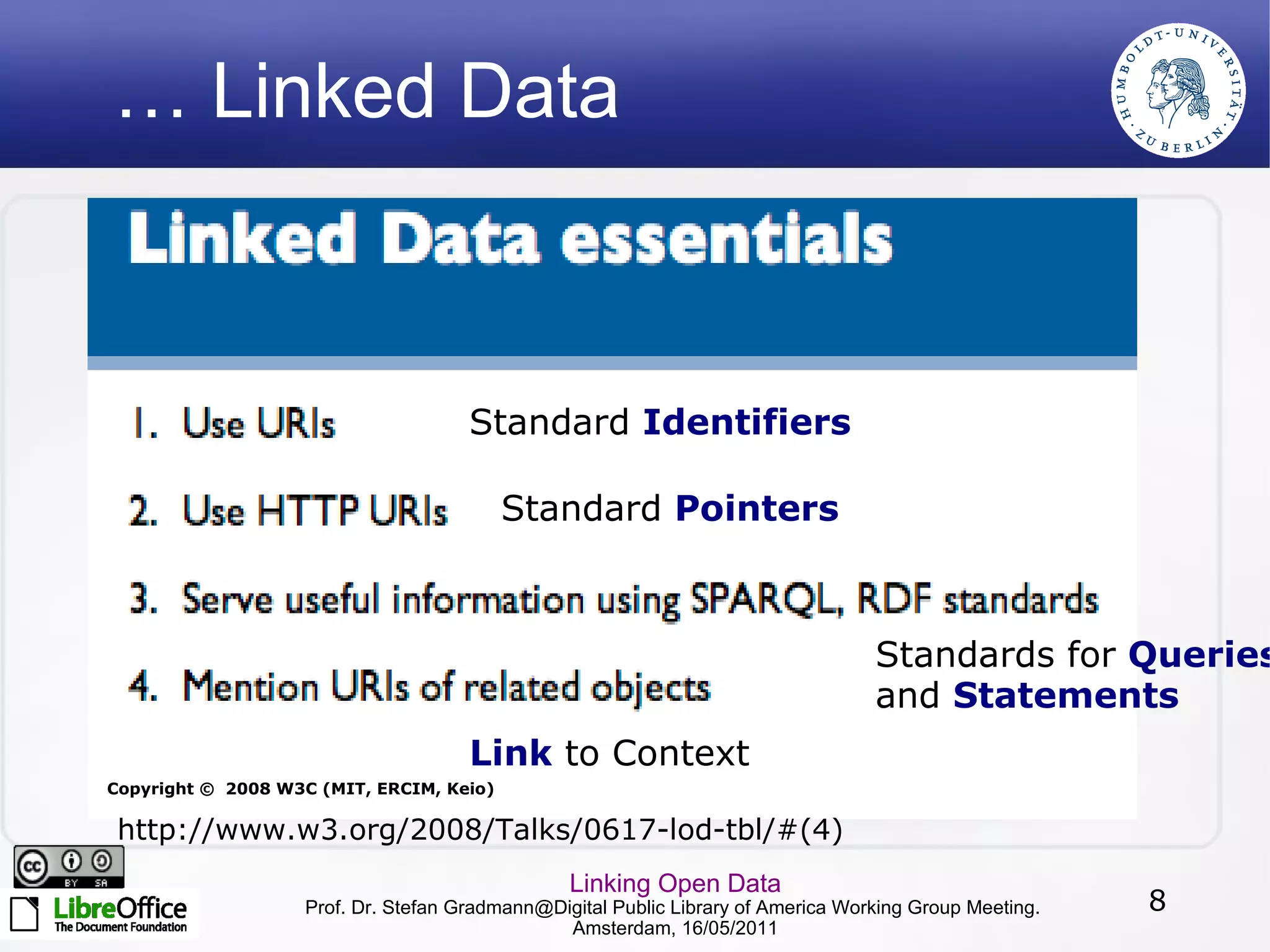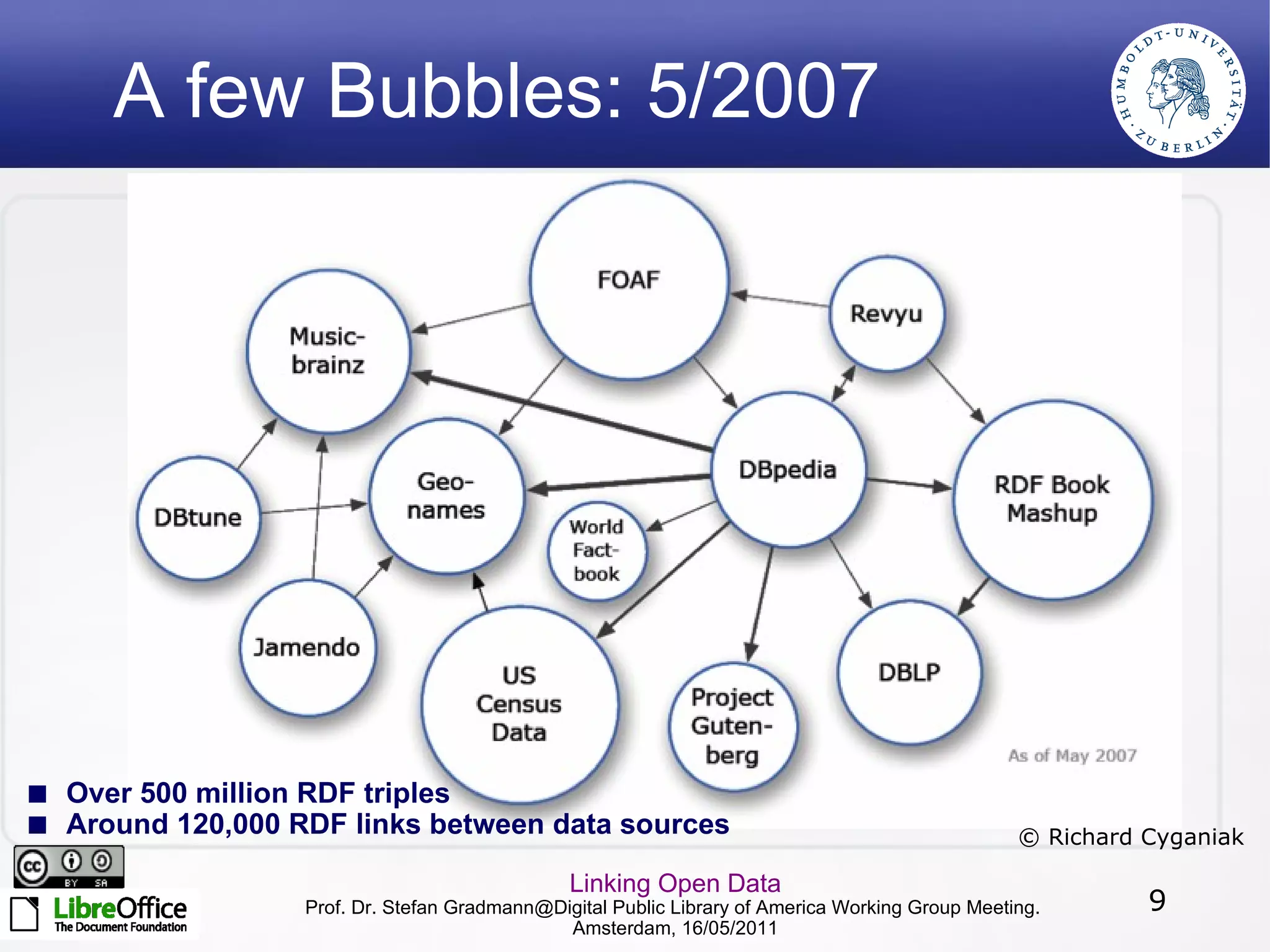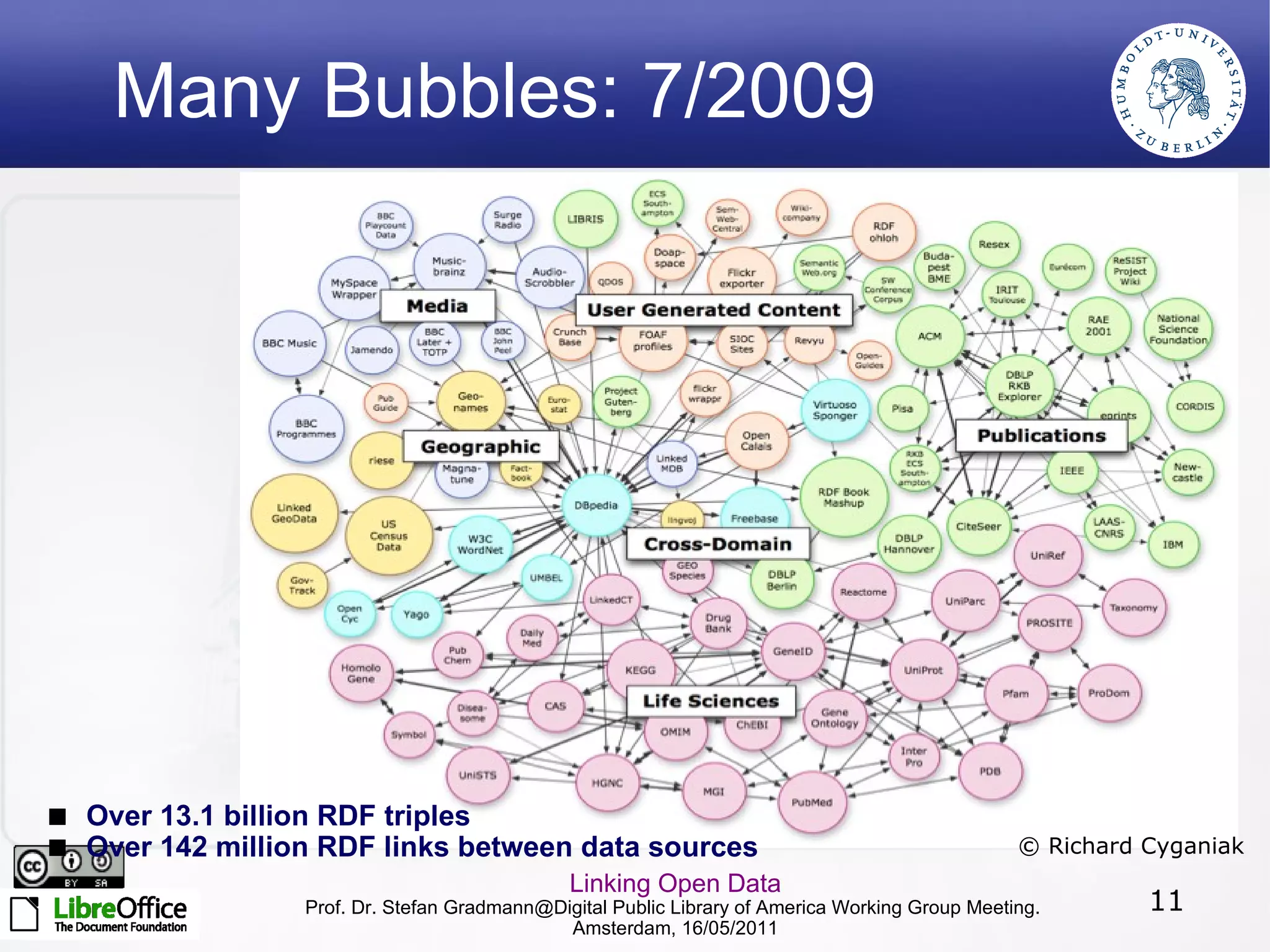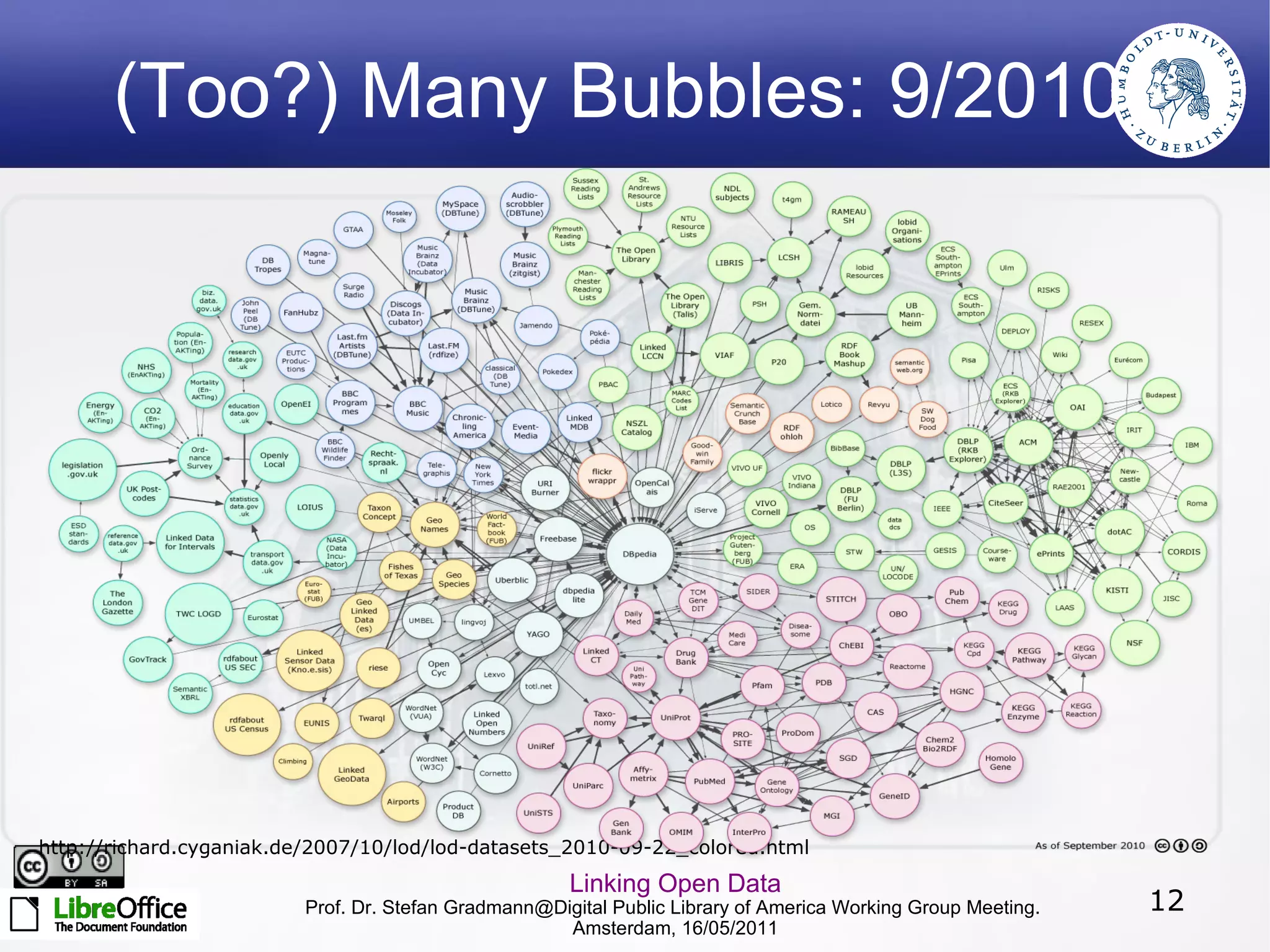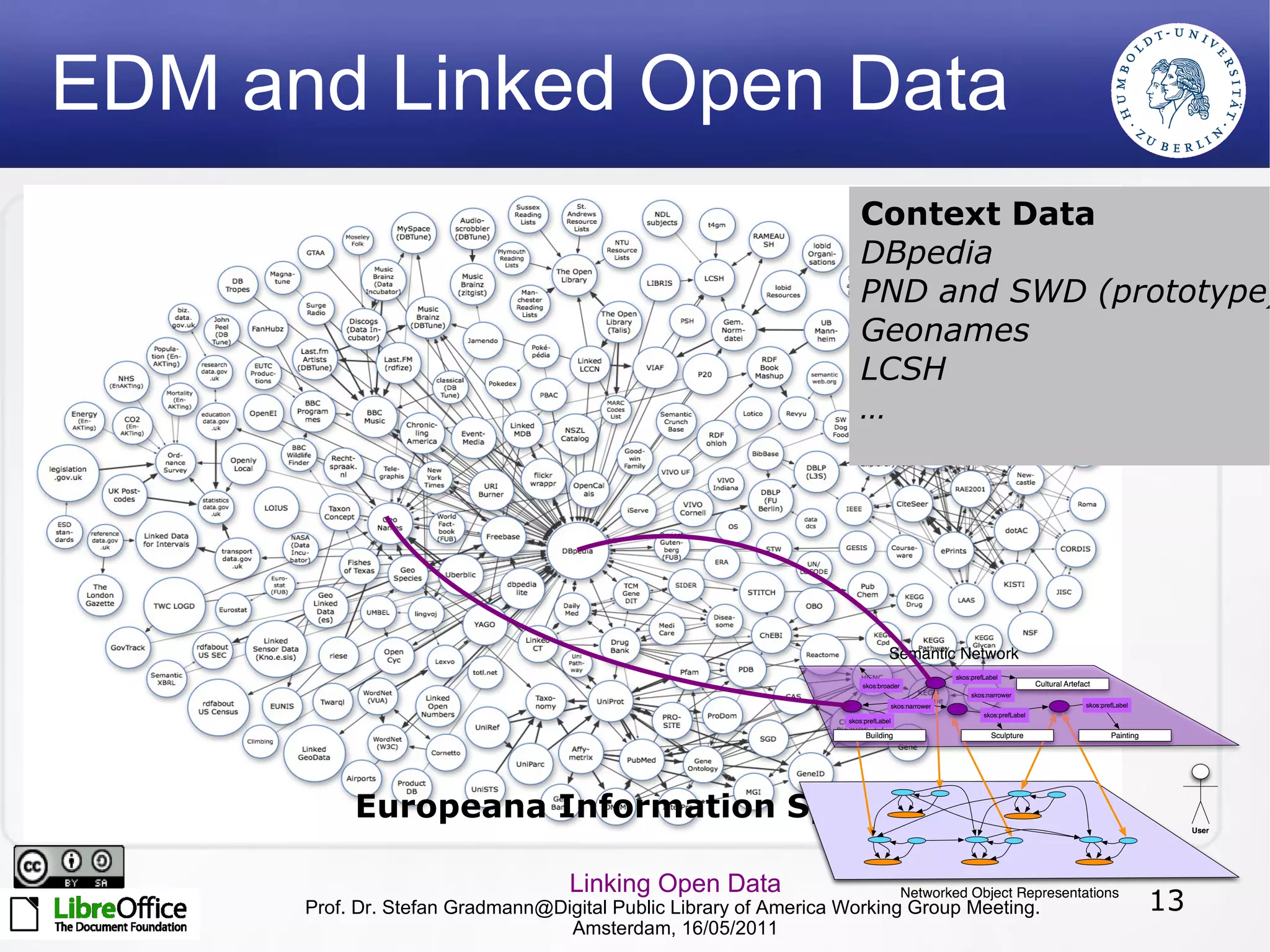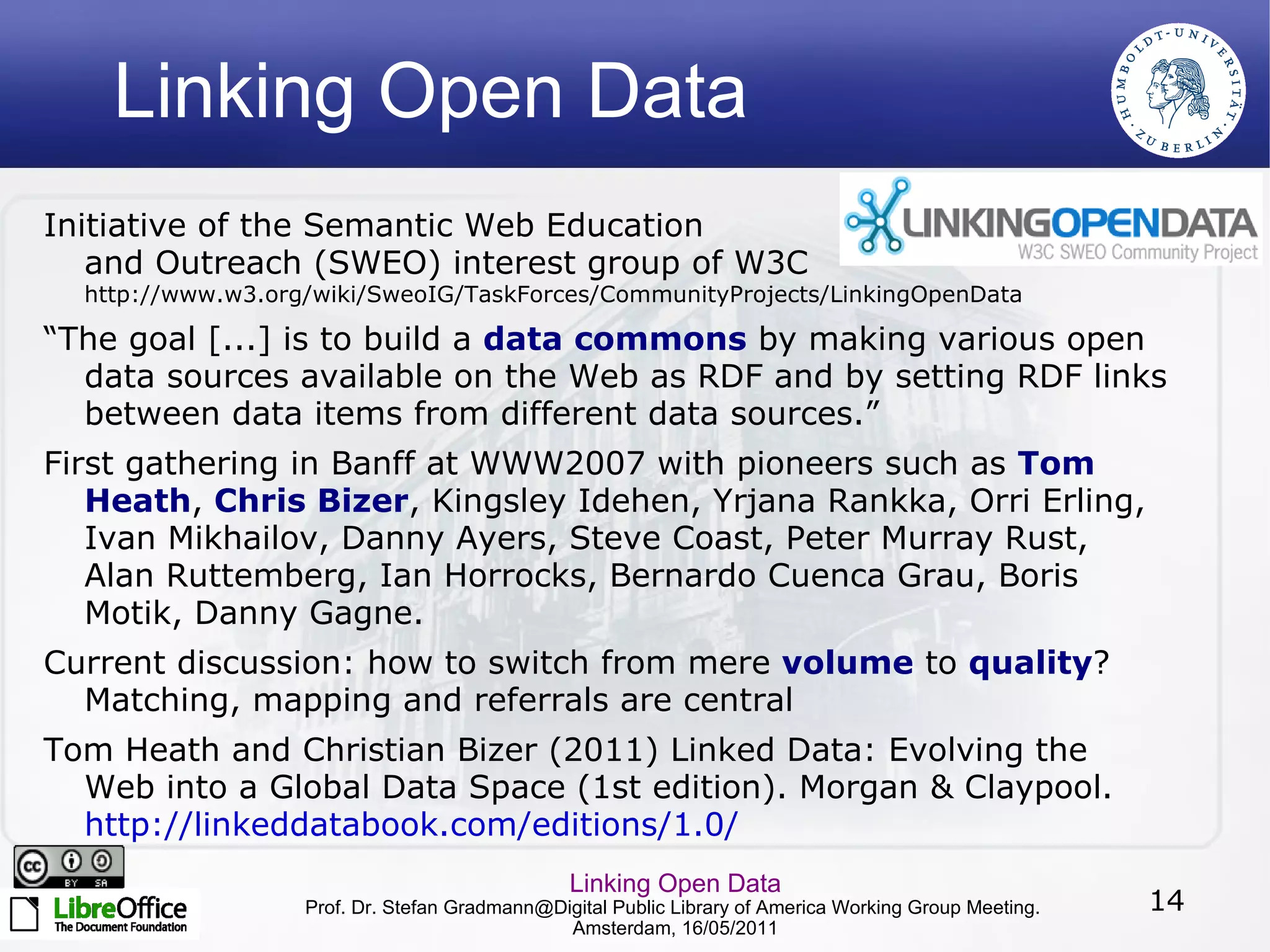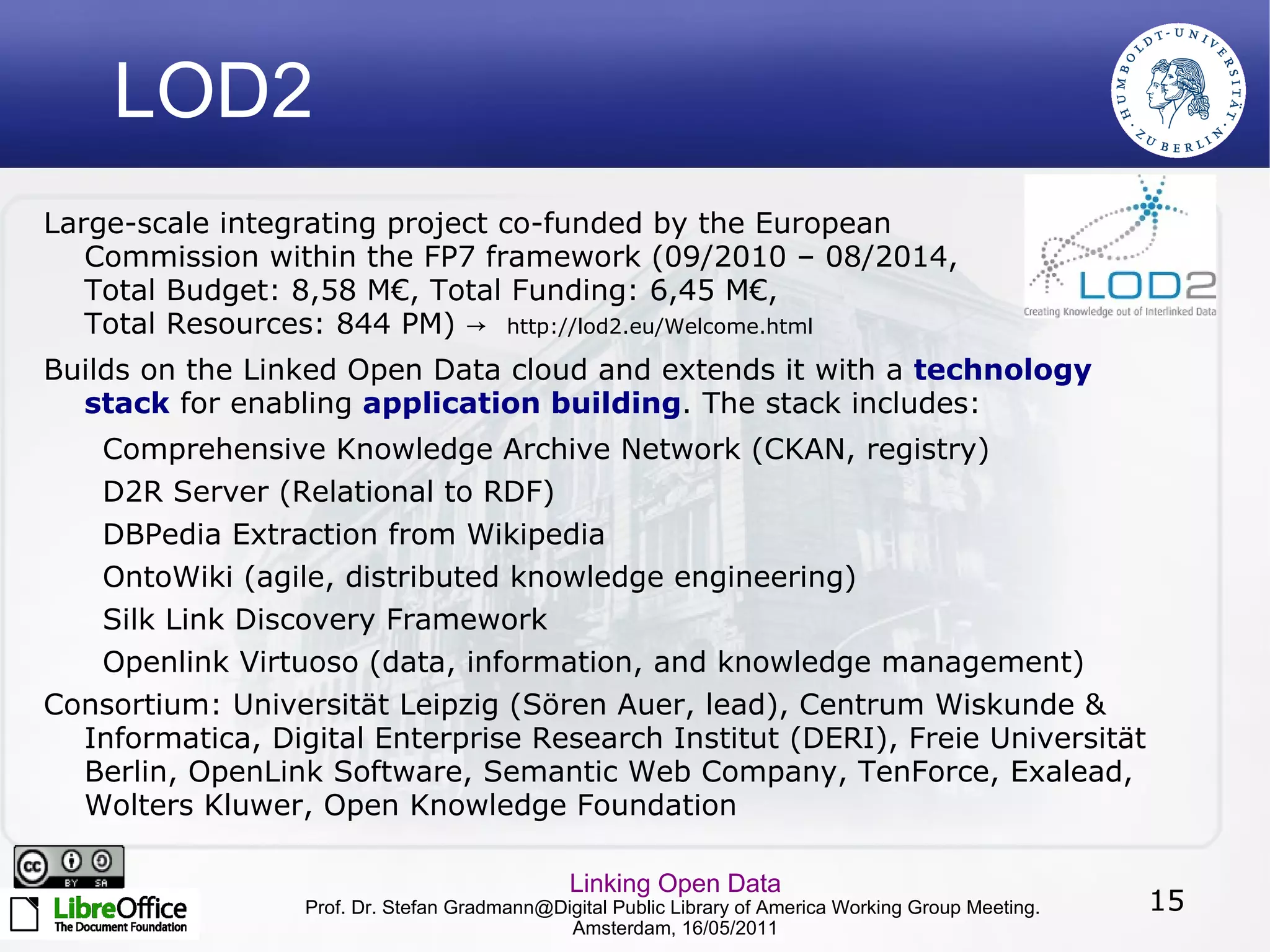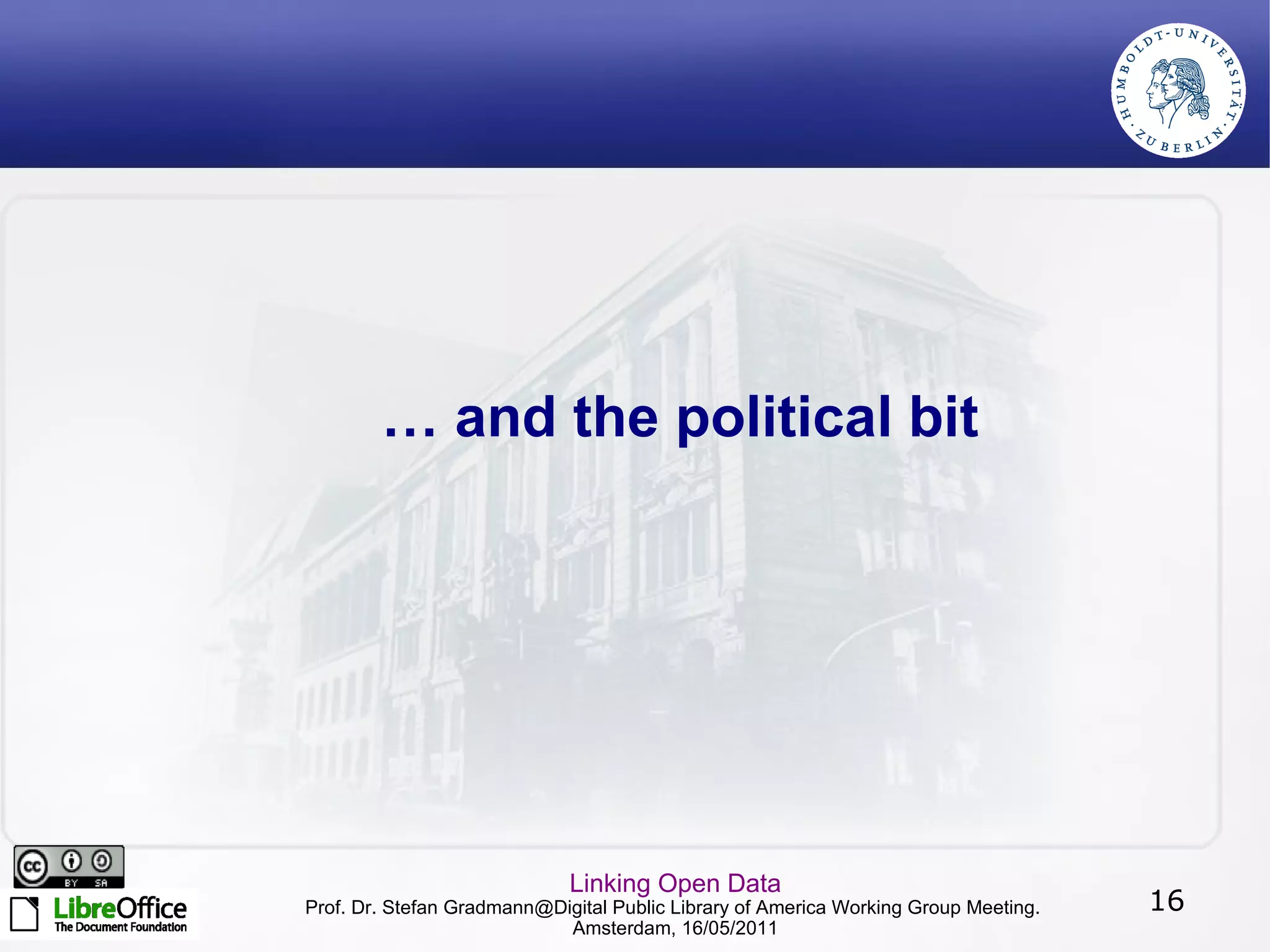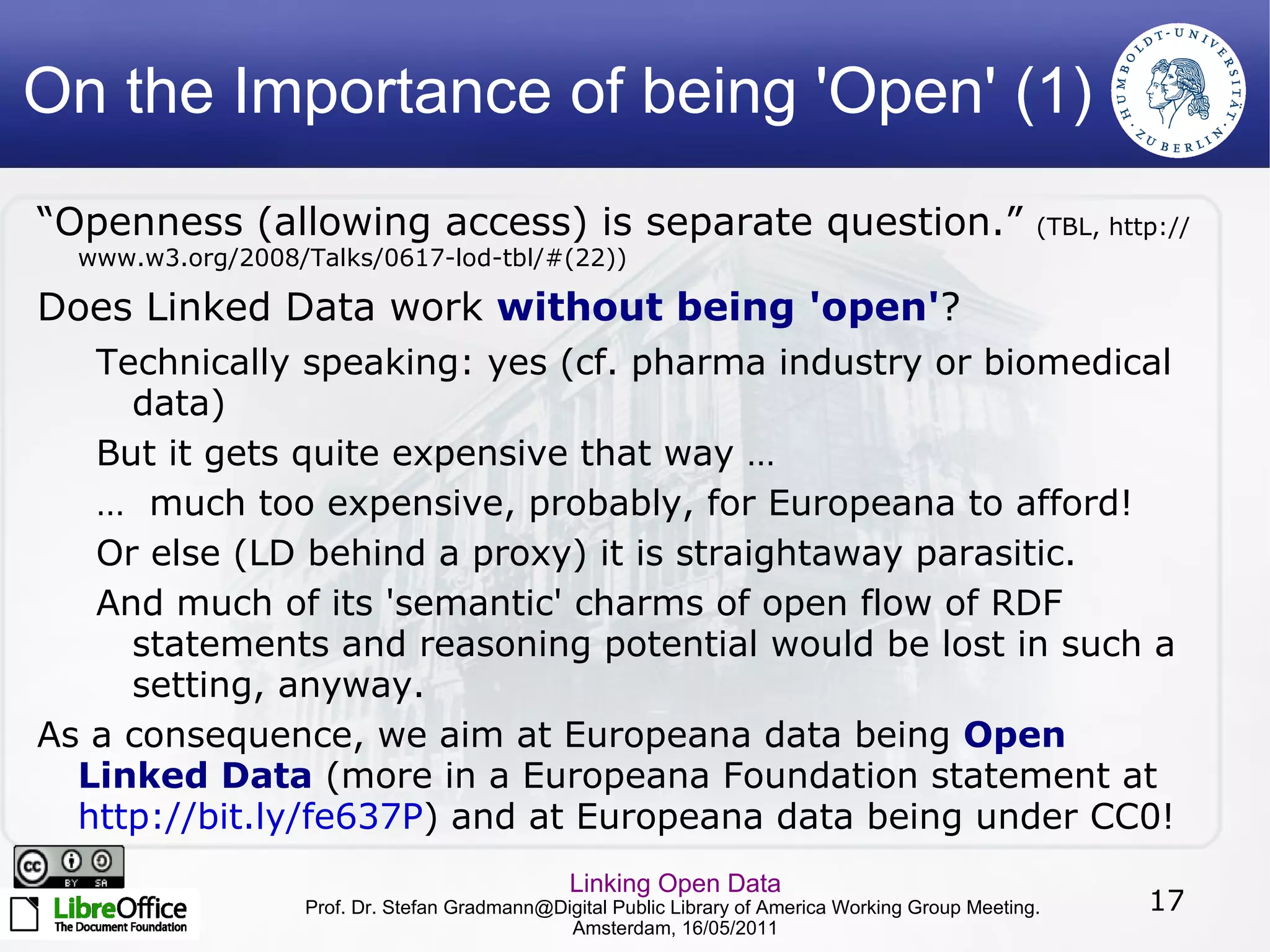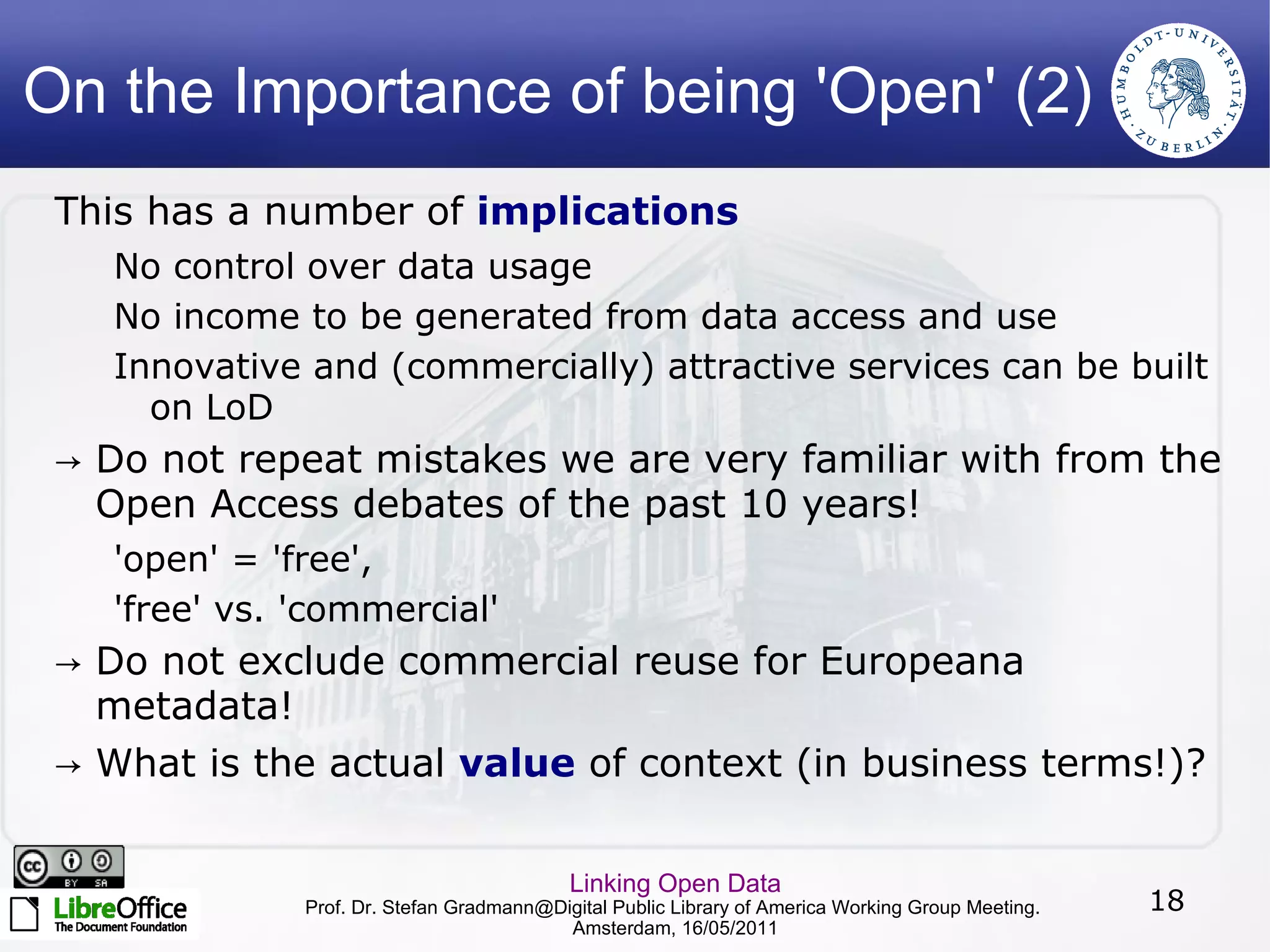Linked Open Data projects aim to extend the web of documents to a web of linked data by adding semantics through standards like RDF and ontologies. The Linked Open Data cloud has grown significantly since 2007 and contains billions of RDF triples and links between data sources. Projects like LOD2 build on this by developing technologies and linking more open datasets to enable new applications. For Linked Data to achieve its full potential, openness and allowing free access and reuse is important, though it does mean losing some control over data usage.
![Linked Open Data: Principles & 2 Projects Prof. Dr. Stefan Gradmann Humboldt-Universität zu Berlin / School of Library and Information Science [email_address]](https://image.slidesharecdn.com/20110516dplaamsterdam-110515111652-phpapp01/75/Linking-Open-Data-1-2048.jpg)
